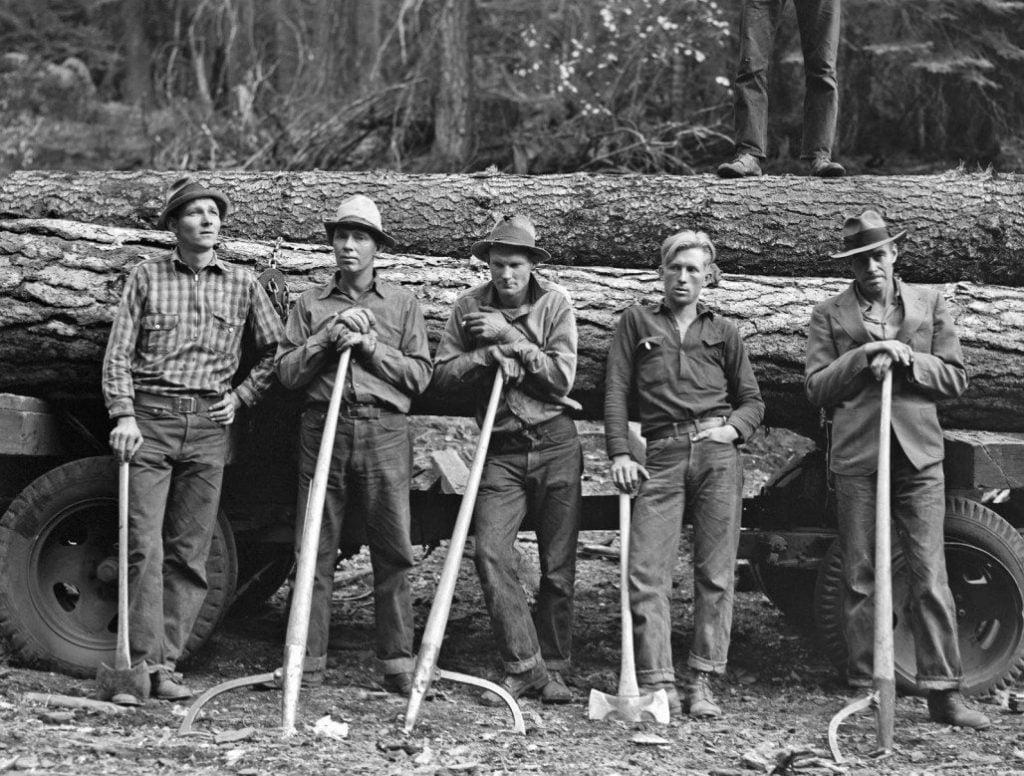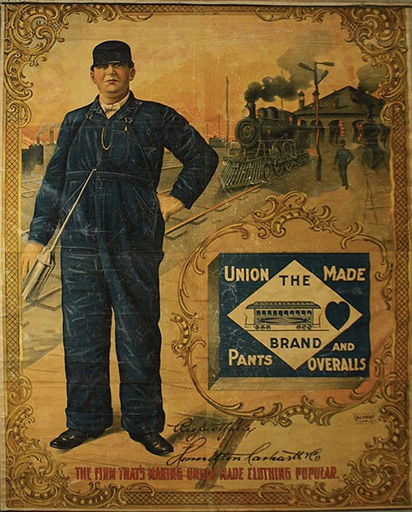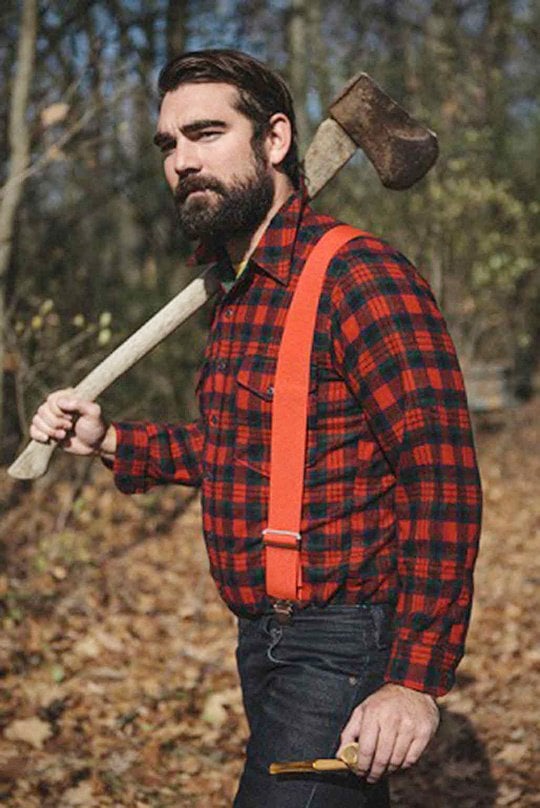Flannel shirts are a timeless style. Flannel shirts are very suitable to be combined with jeans and sneakers or boots. Or worn as an outer, combined with a t-shirt on the inside.
You may have used a shirt with a plaid pattern which we often call flannel. However, do you know the early history of the creation of flannel shirts?
On this occasion, we will review the long journey of this trendy flannel shirt
What Is Flannel?
Flannel has been made since the 17th century and likely originated in Wales. Though it was once made of wool, by the 20th century, flannel was more commonly made with cotton, sometimes mixed with silk. Nowadays, the softest, coziest flannel is 100% cotton.
Flannel shirts are synonymous with hard workers who go directly to the field. Used by people who are on the front line and in direct contact with the object of work in the field.

This can not be separated from the origin of the discovery of this flannel clothing. Flannel shirts have a long and interesting track record. The word flannel comes from the Welsh word gwlanen, which means “wool.”
According to history, flannel was recorded as found in the early 16th century in Wales, as flannelette. At that time the farmers wore warm clothes that were rather thick to protect themselves from the cold weather and tree branches.
In France, the term flanelle was used in the late 17th century. And in the early 18th century, in Germany, it was called flannell. While in English it is written flannel.
Flannel shirts have been around since the 17th century. This cloth was woven by the wife of a Welsh farmer, who had spun wool for centuries and eventually discovered that if you brushed the wool on both sides, it became stronger.
This creates a thicker and stronger fabric. This fabric is durable and well insulated, while still being soft and comfortable. Making it perfect for wet, cold, and windy climates.
How Did This Plaid Pattern Start

The addition of horizontal and cross motifs was done in various colors initially to represent the weaver’s territory, and this pattern was called Tartan. Even tartan has ancient origins, the oldest being from the 6th century BC.
This motif can be found in Austria, belonging to the Celtic culture. Tartan pants were also found in ancient Chinese mummies from the same period during the Iron Age. The simple plaid pattern on this textile uses light and dark wool, but it is very distinctive and is usually worn by the higher classes of society.
Due to its durability, affordability, and warmth, flannel quickly became popular across European borders. Wool mills grew throughout England and France; in the 19th century, production expanded thanks to the more efficient mechanical “carding” process, which was used by factories throughout England during the Industrial Revolution.
In 1889 American businessman Hamilton Carhartt, seeing the need to improve workers’ uniforms in the United States, opened his factory in Detroit, MI, and began producing tough flannel garments.
The History of Flannel Shirts in the 18th Century
Initially, flannel was produced traditionally using wool yarn which was carded in the finishing process. In the 18th century, in line with the Industrial Revolution, there was a massive change in industrial practitioners. Flannel began to be mass-produced and became a manufactured product.
Following the times, and considering the high cost of raw materials, wool is gradually being replaced by cotton fibers, silk blends, and synthetic fibers.

In 1889, a person from Michigan, United States, namely Hamilton Carhatt (1855-1937) founded a company called Carhatt. Carhatt claims to be the first to find shirts made of flannel, including a plaid motif inspired by the Kilt, a traditional Scottish dress.
Carhatt strives to create durable clothing, comfortable to wear, but with character, for active field workers. At first, they made these flannel garments for the engineers who worked on the railroads.
The History of Flannel Shirts in the 20th Century
In the early 20th century, flannel was not only produced for cold weather but began to be adapted to the existing seasons. By maximizing the blending of cotton with silk, flannel is now thinner and lighter. So that flannel shirts can be used in warm weather.
In the same century, flannel entered North America. Flannel with plaid motifs is identified with manual laborers, field workers, especially farmers, shepherds, mining workers, lumberjacks, and those who work outdoors.

The durability of flannel, its ease of washing, as well as its warmth, allows them to move freely and work for long periods of time in cold temperatures. Since then, lumberjacks have been synonymous with flannel shirts and a pair of boots.
When World War I broke out in 1914, flannel was used as a uniform and blanket on the battlefield. And also used as an alternative material for bandages in hospitals. And when the war ended, the world changed. Differences between classes in society are biased.
During the Great Depression that came following the World War, flannel shirts, which were originally synonymous with the lower class, gradually rose to caste and became the property of all social strata. At this time, flannel shirts were identified with men.
In 1939, Red Flannel Day began to be held regularly in Cedar Springs, Michigan, after the city became famous throughout the country for producing red flannel sweaters. The city still celebrates the Red Flannel Festival today, falling on the last weekend in September and the first weekend in October.
In 1963, The Beach Boys made this flannel shirt famous again, after they posed wearing flannel shirts while lifting a skateboard for the cover of their album, “Surfer Girl”.
Flannel Shirts In The Early 90s

In the early 1990s, the Seattle-based band Nirvana (which was driven by Kurt Cobain) and Pearl Jam popularized the plaid flannel shirt again. The golden age of grunge was marked by changes in dress patterns among young people. No more leather jackets that had triumphed by the glam rock circles. The trend is changing, they are busy wearing a combination of flannel shirts, jeans, and boots as well as sneakers.
The Current Development of Flannel Shirts
Currently flannel is synonymous with outdoor clothing. Checkered shirts that used to be rugged are now switching to lighter cotton and more affordable synthetic fabrics. Plaid flannel is also now reaching a higher fashion.
Several big brands such as Dior, Ralph Lauren, Tommy Hilfiger also issued their flannel products. Some of them are transformed into shoes, bags to women’s dresses.
In their latest AW14 runway show, brands from Louis Vuitton, Valentino to Maison Martin Margiela all flaunted gray flannel suits, certainly influenced by the 1950s and ’60s revival brought about by shows like Mad Men.
Related Article: History And Development Of The Varsity Jacket

